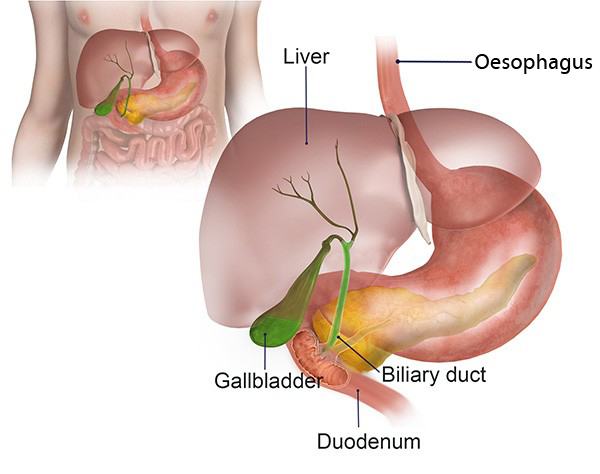Bile Duct Obstructions
What are bile ducts? How do they get obstructed?
Bile ducts are narrow tubes that transport bile, a fat digesting fluid, released by the liver into the small intestine. Bile is temporarily stored in a pear-shaped organ called the gallbladder. The bile ducts can get obstructed partially or completely by gallbladder stones, cysts or tumours, abnormal narrowing of the duct, trauma, infection, inflammation of the ducts, inflammation of the pancreas (pancreatitis) and liver diseases, disrupting the normal flow of bile and leading to jaundice.

What causes the formation of gallstones?
Factors relating to the development of gallstones may include:
- Genetic predisposition
- Being female
- Being obesee
- Having lost weight rapidly
What are the symptoms of bile duct gallstones?
The obstruction of the biliary tract can lead to light-coloured stools, dark urine, jaundice,
abdominal pain, nausea/vomiting, weight loss and fever.
How is a biliary obstruction diagnosed?
A biliary obstruction can be diagnosed through blood tests, and various imaging studies such as ultrasound, biliary radionuclide scan (HIDA scan), MRI scan, magnetic resonance cholangiopancreatography (MRCP) and endoscopic retrograde cholangiopancreatography (ERCP).
What are the consequences of not treating a biliary obstruction?
Left untreated, a biliary obstruction can lead to the build-up of bilirubin, chronic liver disease, sepsis and a life-threatening infection known as cholangitis.
What treatment choices are available for biliary obstruction?
Some of the bile duct procedures include:
- ERCP an endoscopic procedure that can diagnose and treat bile duct stones
- Laparoscopic common bile duct exploration: a procedure to extract stones from the bile duct whilst undergoing laparoscopic cholecystectomy
- Laparotomy (open surgery): to open the bile duct and remove the gallstones






